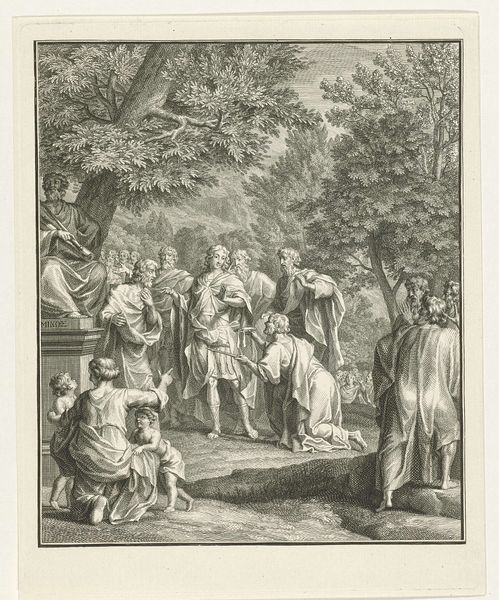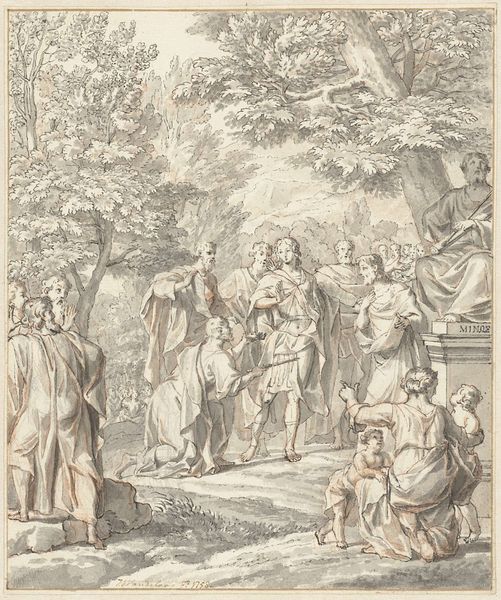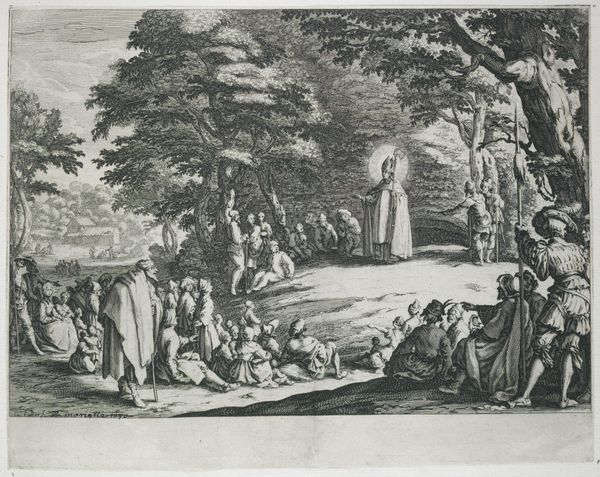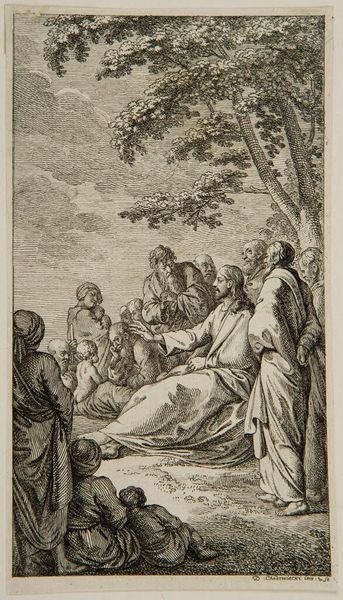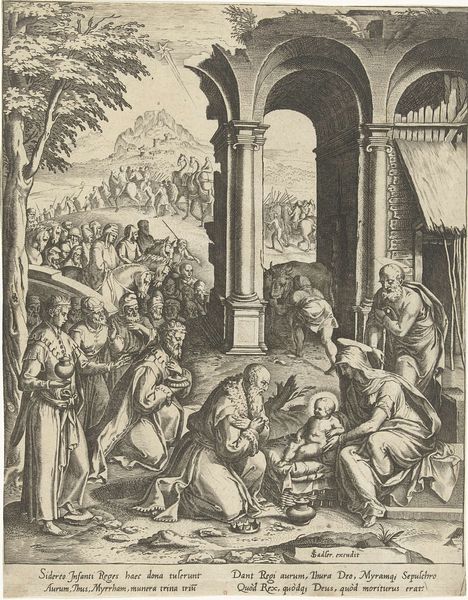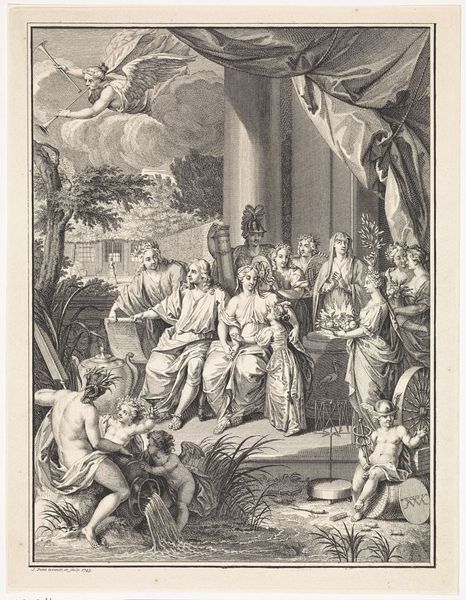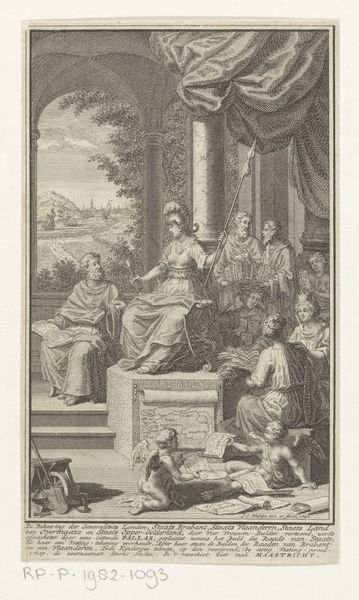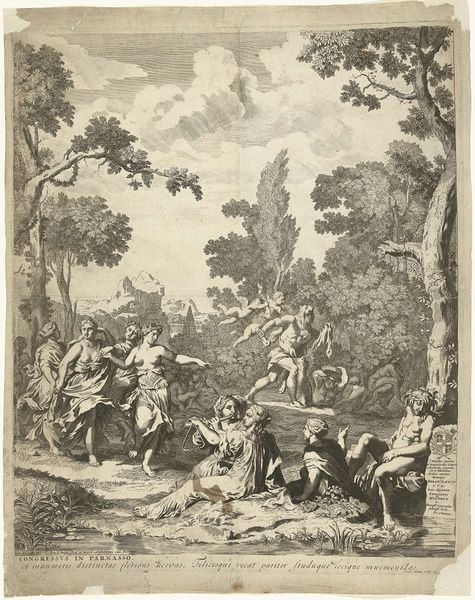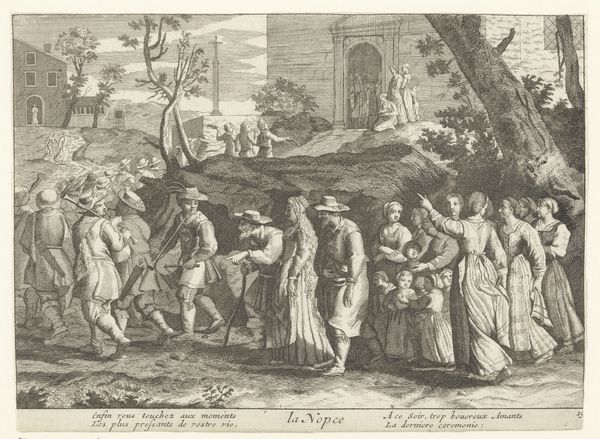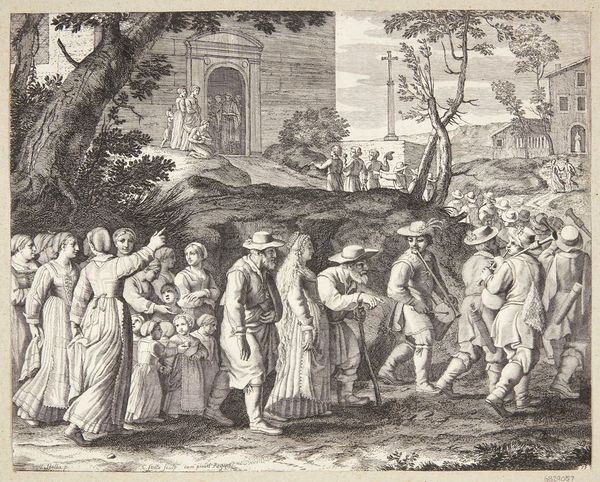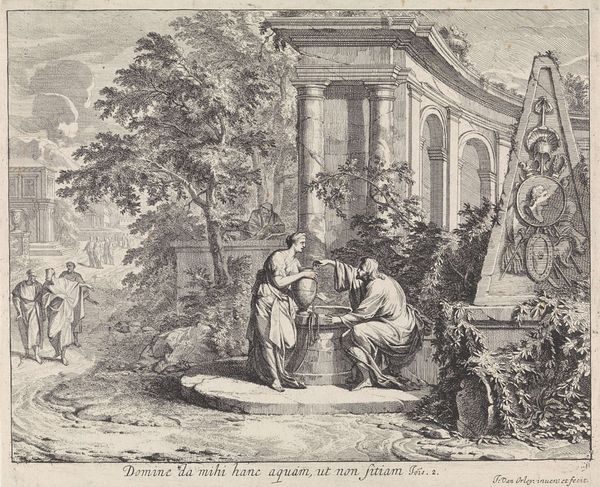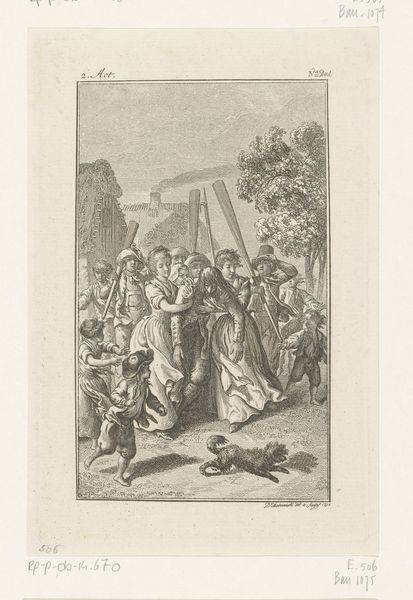
engraving
#
baroque
#
history-painting
#
academic-art
#
engraving
Dimensions: height 210 mm, width 176 mm
Copyright: Rijks Museum: Open Domain
Editor: So, here we have Jan Wandelaar's engraving, "Telemachus weigert de kroon en scepter der Kretenzers," created between 1758 and 1763. I'm struck by how detailed it is, especially considering it's an engraving. The mood feels quite formal, even with the outdoor setting. What symbols stand out to you in this piece? Curator: Immediately, I see the crown and scepter being offered. They are potent symbols of power and authority. The act of Telemachus refusing them speaks volumes. It’s not merely a rejection of kingship, but a renunciation of a whole system of values. He is consciously choosing an alternative path, steeped in a different kind of wisdom. Editor: So, is Telemachus resisting tyranny or something else entirely? Curator: It's multifaceted. Kingship, even offered seemingly freely, carries with it obligations, compromises, and potential corruption. Perhaps he recognizes this inheritance comes with strings attached, a cultural weight he is unwilling to bear. Observe the positioning of figures--those imploring him versus his own stance. Do you see conflict embedded within the scene? Editor: Yes, the kneeling figure presenting the crown seems almost desperate, while Telemachus has a resolute, calm expression. Curator: Precisely. It's about the internal conflict between individual will and societal expectation, between tradition and a potentially more enlightened future. Think of what those symbols would have meant to viewers at the time, perhaps grappling with their own societal constraints. What do we carry that perhaps we should lay down? Editor: That gives me a lot to think about in terms of how societal expectations haven’t really changed all that much across centuries. Curator: Indeed. These symbols are time capsules, echoing through history and still resonating today.
Comments
No comments
Be the first to comment and join the conversation on the ultimate creative platform.
